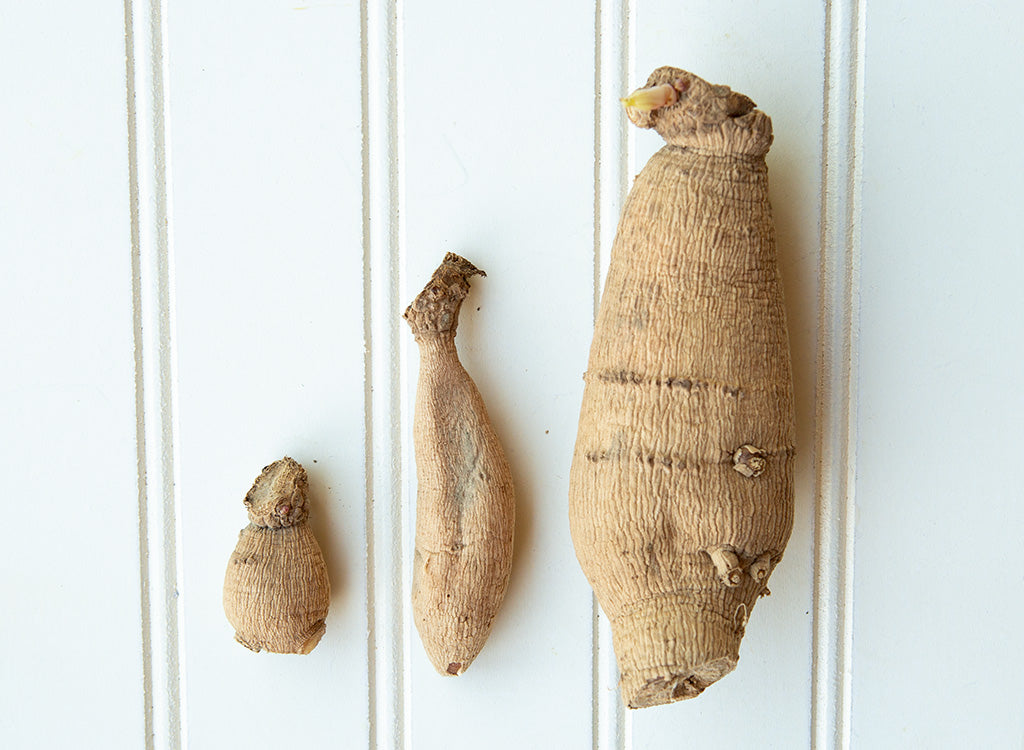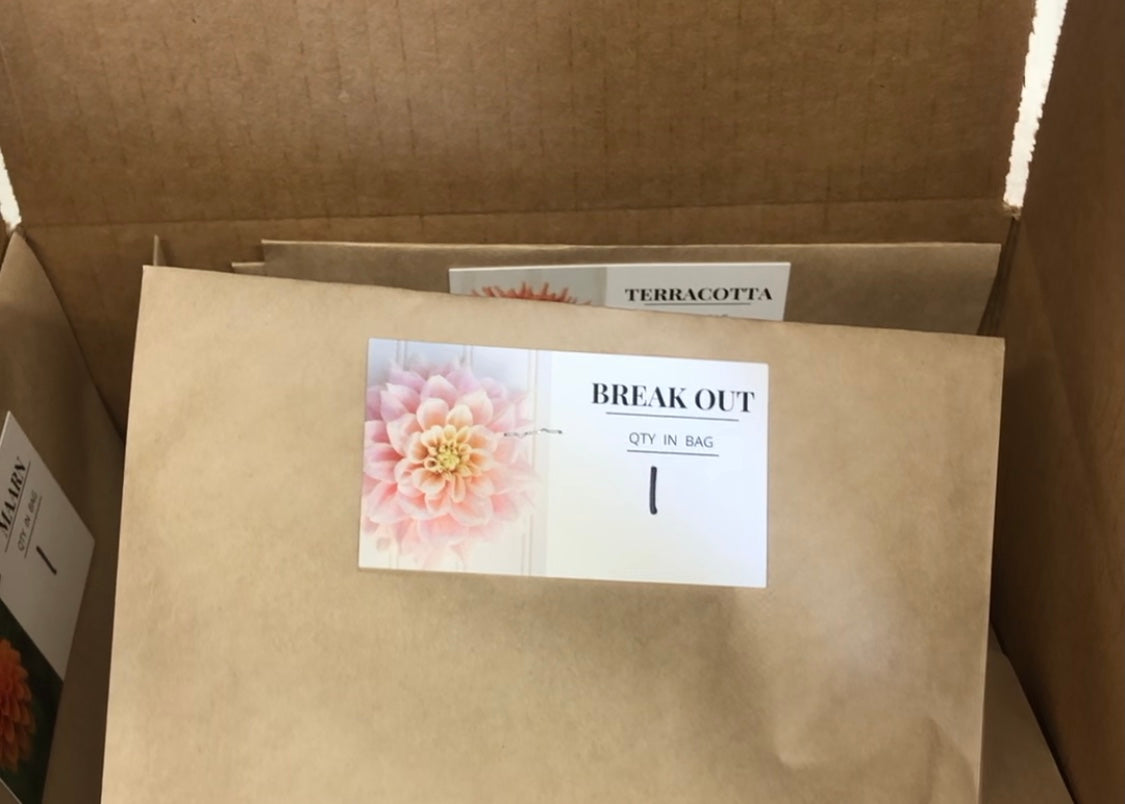Are you purchasing dahlia tubers this season? As dahlia growers across the country are getting ready to host their tuber sales and begin shipping in the spring, it’s helpful to know what to expect when your tubers arrive in the mail.
Each dahlia variety is unique when it blooms, color, shape, size of bloom, height of plant are all what lend to beautiful and distinct dahlias. Just like the uniqueness of the bloom on each variety, so are the tubers they produce.
Generally speaking, most tubers closely resemble small fingerling potatoes. After they are dug, washed, divided and stored for 4-5 months they are then packaged and shipped to your door. Some varieties withstand this process very well, while others have a harder time.
Here’s a look at what to expect when your tubers arrive:
Size
If you’re ordering more than one variety, expect the size of each variety to vary. A large tuber is not necessarily better. The larger the tuber the longer it will take for roots to start forming. Likewise, the smaller the tuber the quicker it will shoot roots and try to grab nutrients from the soil.
Firmness
Most varieties should still be plump and firm with not much shrivel. There are some varieties that simply to do not hold up as well in storage and will have shrivel. Do not be worried! As long as there are no signs of severe shrivel, or rot, your tubers will have the opportunity to grow and produce beautiful plants.
Eyes
Your tubers should have at least one visible eye on each tuber. Some varieties are VERY QUICK to sprout an eye while others may take longer. Although it may be harder to identify, the eye should still be viable when dormant.


The tubers above all show signs of severe shrivel. The second tuber from the left is completely dried out and will not be able to produce a sprout or plant.
If you've been storing tubers and find them looking like this come spring be sure to carefully check before tossing them out. If they are completely dried out there is no chance of them producing anything, but if moisture is still in the tuber they may have a chance of surviving.
Rot & Mold
When your tubers arrive check them immediately, be sure each tuber looks good and has no signs of rot. If you see any signs of rot be sure to contact the grower immediately so they can remedy the situation.
*Many growers have a short window for you contact them with issues because tubers are perishable and can be quickly damaged if they are not checked on and cared for in a timely manner.
It is normal for some surface mold to grow on tubers. There shouldn’t be much, if any, mold on your tubers when they arrive to you. If you are waiting to plant for a few weeks and are storing the tubers that could be enough time for mold to appear. Be sure to wipe off and remove any mold before planting.

If all looks well when your tuber arrive and you’re not quite ready to plant be sure to store your tubers where they will not freeze. Ideally, a location that is above freezing and under 50º with relatively high humidity. Continue to check your tubers weekly until it's planting time. Or, consider potting them in a damp potting mix to ensure viability until you are ready to plant outside.

